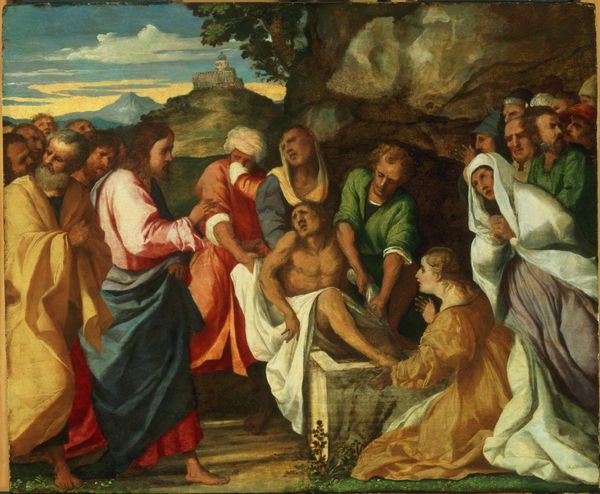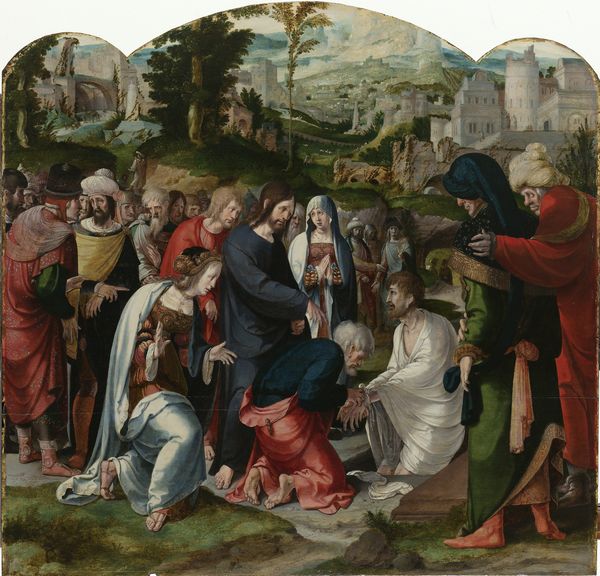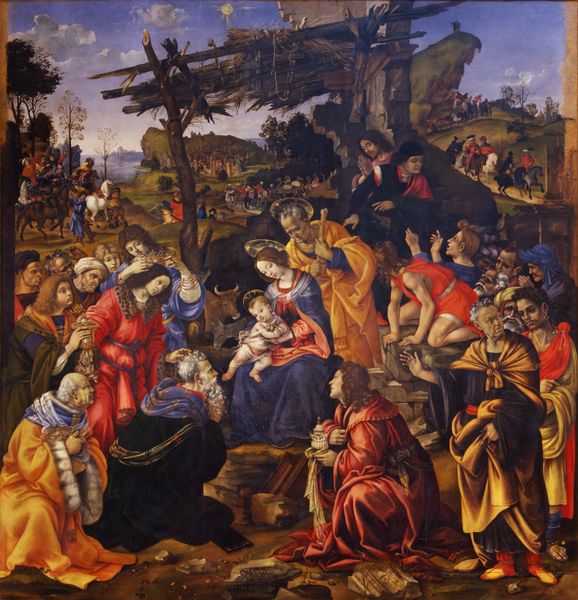
painting, oil-paint
#
narrative-art
#
painting
#
oil-paint
#
landscape
#
figuration
#
oil painting
#
history-painting
#
italian-renaissance
#
early-renaissance
Copyright: Public domain
Curator: Before us is Filippino Lippi’s "Adoration of the Magi," painted around 1480 using oil paint. It’s quite the scene, isn’t it? Editor: Absolutely. The first thing that strikes me is the juxtaposition of the dilapidated structure with the vibrant colors of the figures' garments. There’s a sense of solemnity amidst what seems to be a kind of collapse, physically and perhaps symbolically. Curator: Precisely. Consider the role of the Magi—these were wealthy and powerful individuals. Lippi’s depiction is an example of how the Early Renaissance was eager to establish itself, seeking connections to historical significance while simultaneously presenting wealth and status. It emphasizes the important civic and religious values embraced by Florentine society, highlighting faith as an intersection of power and visual storytelling. Editor: And isn’t it interesting how the ruin serves as both the backdrop and, in a sense, a visual metaphor? I read it as indicative of the decaying old order being replaced by the advent of Christianity. Perhaps that resonates, as we still wrestle with notions of dominance in art today. The racial dynamics in this painting, how the Magi are often rendered, deserves closer examination in our current social climate. Curator: An astute point. During this period, the depiction of different ethnicities in religious painting carried its own complex politics, often aligning with trade routes and perceptions of global power. And to have a closer look at the materials used, you notice the precious nature of the painting, with gold elements subtly enriching the piece. This emphasizes the value and prestige attached to these devotional images. Editor: The gold really adds another layer to that tension I mentioned. Opulence placed against what could be considered material decay. I wonder about the role of the patrons who commissioned this work. To what extent did their specific identities, aspirations, and possibly colonialist views, shape Lippi’s rendering of this scene? Curator: We know that works such as this had immense social functions and significance, solidifying identities while engaging within a larger network of visual culture that, in turn, mirrored real-world socio-economic relationships. Editor: Indeed. The "Adoration of the Magi" speaks to broader historical and contemporary anxieties. A painting filled with subtle visual language, challenging us to unpack the historical and intersectional narratives embedded within. Curator: And Lippi, with his deft use of light and shadow, offers a nuanced entry point into these histories and societal shifts.
Comments
No comments
Be the first to comment and join the conversation on the ultimate creative platform.













